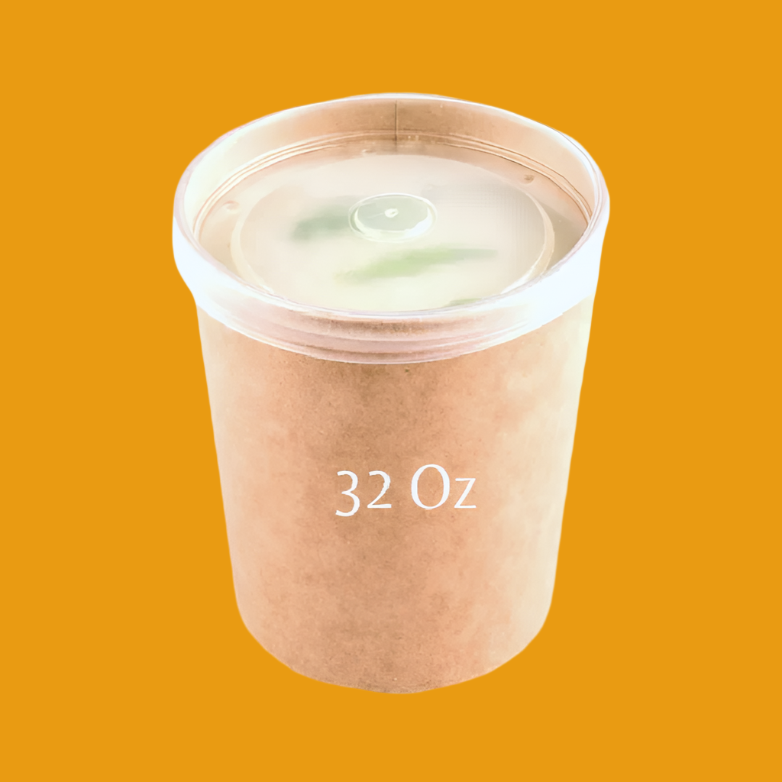The world of sushi is no longer a serene pond. It's a churning ocean, where diverse culinary currents meet, fueled by innovative trends and fierce competition. In today article, we'll explore the dynamic landscape of the USA and Canada sushi industry, identifying key trends and equipping you with winning strategies to navigate the sushi showdown and emerge victorious.
Understanding the Sushi Landscape in North America
Sushi, once a niche culinary experience, has exploded into a mainstream phenomenon in the US and Canada. This captivating market, boasts diverse preferences, thriving segments, and exciting regional variations. Let's dive into this delectable landscape.
Market Overview:
- Size & Growth: The US alone boasts a $30 billion sushi market, projected to reach $44 billion by 2027. Canada closely follows, with a flourishing $1.5 billion market and strong annual growth.
- Key Players: While independent restaurants dominate the scene, larger chains like Nobu and Kura Sushi are making their mark, particularly in urban areas. Online platforms like Grubhub and Uber Eats are also carving a niche, catering to the growing demand for delivery.
Regional Variations:
- Canada: Toronto boasts a diverse, fusion-centric scene, with Korean and Vietnamese influences making their mark. Vancouver champions sustainability, with a focus on local fish and eco-friendly practices.
- West Coast: California reigns supreme, known for its casual, fresh-focused approach, with an emphasis on local ingredients and innovative rolls. Think avocado-topped California rolls and salmon with yuzu sauce.
- Northeast: New York prioritizes fine-dining experiences, with meticulous attention to detail and traditional preparations like omakase (chef's choice). Expect tuna belly nigiri and uni tasting platters.
- Midwest: Sushi here leans towards the casual and affordable, with chain restaurants and quick-service options dominating. Expect familiar favorites like salmon teriyaki and spicy tuna rolls.
Restaurant Segments:
The sushi market caters to a diverse clientele through distinct restaurant segments:
- Casual: These relaxed eateries offer affordable options like bento boxes, poke bowls, and basic rolls, targeting a broad audience.
- Fine-dining: At the other end of the spectrum, upscale sushi restaurants cater to discerning palates with omakase (chef's choice) menus, premium ingredients, and meticulous service.
- Fusion: This segment blends Japanese flavors with other cuisines, from Korean kimchi to Peruvian ceviche, attracting adventurous diners seeking unique twists.
- Delivery-focused: Embracing the post-pandemic trend, delivery-focused sushi restaurants offer convenient options for busy lifestyles, often specializing in creative rolls and innovative takes on classic dishes.
Understanding these market nuances is key for sushi restaurateurs. This helps your restaurant tailor menu and dining experience to your region's preferences. In addition, identifying the segment you want to tap into help to craft a concept that resonates with your target audience.

Understanding Trends in Sushi Market in North America
The North American sushi market is a dynamic ocean, surging with innovative trends. To stay competitive, savvy restaurateurs need to understand and ride the waves of these four forces:
Sustainability: Consumers are increasingly concerned about the environmental impact of their choices, leading to a surge in demand for sustainably sourced seafood in sushi restaurants. This trend is driven by:
- Environmental awareness: Rising concerns about overfishing, pollution, and habitat destruction are prompting consumers to seek out responsible options.
- Healthier choices: Consumers are associating sustainability with healthy eating, leading them to prefer fish from responsible fisheries.
- Transparency and traceability: Consumers want to know where their food comes from, and restaurants are responding with transparent sourcing practices and certifications.
Technology: Technology is transforming the sushi experience, offering convenience and personalization. Here is how technology applied in sushi restaurant:
- Online ordering and delivery: Busy lifestyles and the pandemic have fueled the growth of online ordering platforms making sushi more accessible and convenient.
- AI-powered customization: Restaurants are using AI to personalize menu recommendations and offer custom rolls based on individual preferences.
Fusion Sushi: Diners are craving adventurous palates, leading to a surge in popularity of ethnic fusion sushi. This is result of:
- Global influences: Korean kimchi mayo, Peruvian ceviche-inspired rolls, and Mexican-style guacamole sushi are just a few examples of the diverse flavor combinations emerging.
- Culinary exploration: Consumers are open to trying new and exciting tastes, pushing sushi beyond traditional boundaries.
- Local ingredients and adaptations: Restaurants are incorporating local and seasonal ingredients into their fusion creations, adding a unique twist to familiar flavors.
Delivery Service: The pandemic has permanently altered dining habits, making takeout and delivery essential, because of:
- Convenience and safety: Consumers still prioritize convenience and safety, leading them to choose delivery options over dine-in experiences.
- Catering to diverse needs: Restaurants are expanding their takeout menus and offering family-friendly options to cater to a broader audience.
- Marketing and social media: Restaurants are leveraging social media to promote their delivery services and attract customers through attractive visuals and targeted campaigns.
Overall, the sushi trends are entirely current as well catering to the demands and changes of people.

What Does Your Sushi Restaurant Need to Do to Navigate Well in Competitive Market ?
Considering the diverse landscape and trends discussed above, what does a sushi restaurant need to navigate effectively, become popular, and survive despite challenges? Here are some strategies to help stabilize your restaurant.
Forge a Strong Identity
- Develop a clear Unique Selling Proposition (USP): What makes your restaurant stand out from the crowd? Is it your focus on locally sourced ingredients, innovative flavor combinations, sustainable practices, or an immersive dining experience?
- Craft a compelling brand story: Tell your story - your passion for sushi, your commitment to quality, your unique approach. Engage your customers emotionally and connect with their values.
- Invest in visually appealing branding: Create a consistent brand identity across your logo, menu, website, and social media to leave a lasting impression.
Master the Menu Match
- Optimize your menu based on market trends and regional preferences: Offer a balance of familiar favorites and innovative creations, catering to diverse dietary needs and tastes.
- Prioritize fresh, high-quality ingredients: Source ethically and sustainably whenever possible. The quality of your ingredients will shine through in the taste.
- Embrace delivery-friendly options: Design dishes that travel well and maintain their presentation even after takeout.
- Offer personalized experiences: Allow for customization, whether it's ingredient substitutions, specific spice levels, or build-your-own platters.
Embrace Technology and Innovation
- Invest in online ordering platforms and a user-friendly website: Make it easy for customers to discover your menu, place orders, and track their deliveries.
- Explore AI-powered recommendations and personalization: Tailor suggestions based on individual preferences and past orders.
- Utilize social media effectively: Showcase your offerings, engage with your audience, and promote special deals and events.
- Consider automation options: Investigate automated kitchen systems or delivery robots to increase efficiency and reduce costs.
Cultivate a Memorable Dining Experience
- Create a unique ambiance: Whether casual or upscale, design an atmosphere that reflects your brand and enhances the dining experience.
- Invest in friendly and knowledgeable staff: Train your team to explain your menu, ingredients, and sustainability practices with passion and expertise.
- Offer interactive elements: Consider live cooking stations, open kitchens, or chef's specials to create a more engaging experience.
- Personalize the service: Greet regulars by name, remember food preferences, and offer recommendations based on past orders.
Adapt and Evolve
- Stay informed about industry trends and customer preferences: Regularly research the market and be willing to adjust your offerings to stay ahead of the curve.
- Gather feedback and analyze data: Pay attention to customer reviews, online comments, and sales data to identify areas for improvement.
- Be flexible and willing to experiment: Don't be afraid to try new things, test out different menu items, and adapt your strategies based on results.
- Build resilience and prepare for unforeseen challenges: Stay ahead of disruptions like supply chain issues or economic downturns by diversifying your suppliers and being adaptable.
By focusing on these key actions, sushi restaurants can not only survive the sushi showdown but thrive in this exciting and dynamic market.

How Can Kimecopak Help Your Sushi Restaurant?
Packaging is becoming an increasingly important factor for businesses to stand out and make a lasting impact on their marketing and sales. As a leading supplier of eco-friendly packaging for the North American market, Kimecopak understands this. We also understand the challenges that businesses face. That's why we offer a comprehensive packaging solution that includes high-quality products and support services.
-
Kimecopak offers a variety of paper sushi boxes. Our anti-fogged window design showcases your delicious sushi. Our boxes are also durable and can be used with a variety of foods, including dry, wet, hot, and cold.
Discover our sushi containers
-
Customization service: Kimecopak offers customized packaging services to meet your business's specific needs and goals. Customization is a great way to make your business stand out and market your brand more effectively.
Step by step to Custom Logo
-
Kimecopak offers businesses a variety of exclusive offers, including: fixed prices, 5-7% savings, free storage, scheduled shipping
Learn more about Subscribe for Happy Life and Enjoy a smooth operation on your restaurant.
To learn more about our products and services, please contact us today via email halo@kimecopak.ca or Kimecopak Facebook Fanpage.
Packaging is an important part of any successful sushi restaurant. By using sustainable packaging and following sustainable practices, you can help your restaurant stand out from the competition and make a positive impact on the environment.









